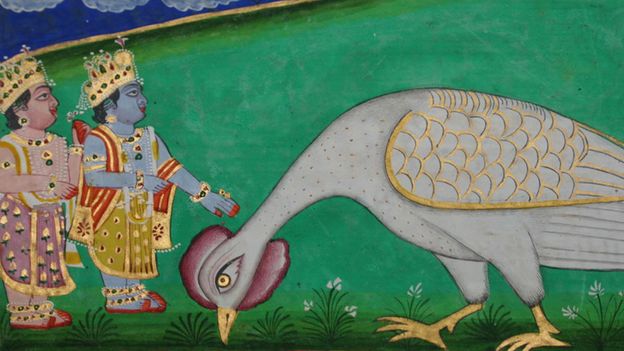
Indofuturism isn’t new but it is increasingly prevalent in popular culture. More and more creatives are concocting alternative realities based around Indian spirituality and folk customs, in a process that challenges Western visions of the future. “The discourse around futurism is often deeply rooted in Eurocentric ideas of the world,” says Sarathy Korwar, a London-based jazz musician who describes his latest album, Kalak, as “an Indofuturist manifesto”. Just like Afrofuturism, “Indofuturism is moving the focus to the Global South,” Korwar tells BBC Culture.
Other non-Western futurisms include Gulf Futurism, Sinofuturism, Indigenous Futurisms and of course, Afrofuturism, the catalyst for it all. Each of these philosophies possess varying visual languages and motivations but they all lay their own claim to modernity using an indigenous methodology. In Indofuturism, that means applying localised knowledge to alternative realities. On Kalak, Korwar’s polyrhythms are informed by India’s cyclical understanding of time. “In South Asia, culturally, we envisage our relationship to the future and the past in ideas of cyclicality,” the percussionist explains. “Time doesn’t have to flow in a line but can be understood to flow in a circle”. Korwar describes his music as “circular” alluding to a composition technique in which a song’s beginning and end are indistinguishable. This is evident on Kalak’s single, Utopia Is a Colonial Project, in which glistening synth lines both start and end the track. Music’s “inherent hierarchy”, ie reading notes from left to right and top to bottom, pushed him to think about a circular notation system instead.
The word Kalak itself is also a palindrome, echoing the idea of continuous loops, while the album artwork features a circular symbol of sacred geometry. Several strains of Indian folk music are usually performed by a group of musicians sitting in a circle, and this communal aspect of music-making was another influence on Korwar, who describes his style as “future folk”. In this setting, a player’s role is fluid as they can be an audience member and performer at the same time, he explains. All these references are his way of breaking up the Western construct of linearity.
Origins of Indofuturism
It’s hard to locate the exact origins of Indofuturism. Some experts point to early Indian modernists such as poet and thinker Rabindranath Tagore who, in the late 1800s and early 1900s, sought to install a new form of education in West Bengal. His school, Santiniketan, integrated indigenous knowledge, nature, art and pan-Asian beliefs in an effort to create a curriculum that would surpass the British colonial model, and create a new generation of Indian free-thinkers. Begum Rokeya, a writer and political activist, also embodied Indofuturism in her early fiction. Her 1905 short story Sultana’s Dream depicts a society ruled by women who invent solar ovens, flying cars and cloud condensers that offer abundant clean water. Published at a time when widows were burned alongside their deceased husbands, the fictional work is an influential critique of patriarchal science, and one of India’s first examples of feminist science fiction.